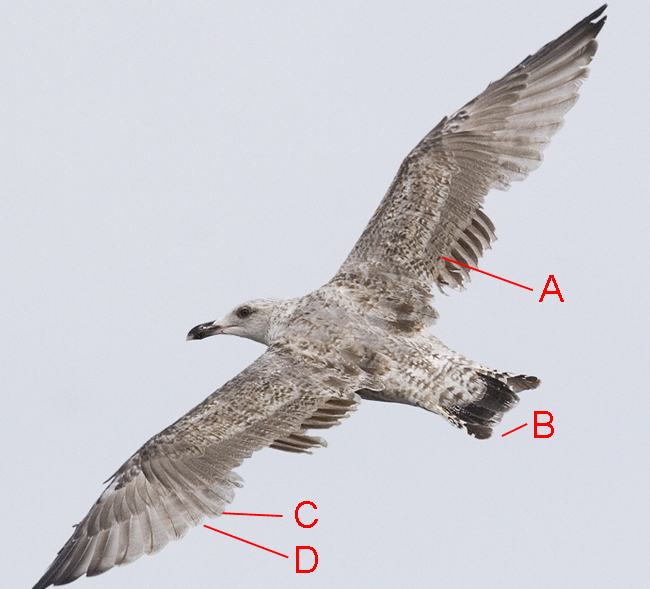 Herring Gull- Zilvermeeuw (argentatus & argenteus)
Herring Gull- Zilvermeeuw (argentatus & argenteus)
(last update: December 15, 2011
Herring Gull - 2cy July
Introduction
This website deals with the Herring Gulls of the taxa argentatus and argenteus. Argenteus is an abundant breeding species on Iceland, Britain, NW France, Belgium, the Netherlands and N Germany. The taxon argentatus breeds in NE Europe, from Denmark, the coast of the Baltic Sea, Scandinavia and coast of the White Sea. In the centre of the breeding range (Denmark and the NW German coast), birds show intermediate characteristics, indicating there is a cline in argenteus-argentatus. Argenteus in Western Europe is pale-backed, slightly smaller and with relatively much black in the wing-tip; argentatus in the NE Europe is larger, slightly darker on upper-parts and show less black in the wing-tip.
Due to the large breeding range, there is much intra-specific variation in argentatus, with most large, powerful birds in the northern populations, showing the most darkest upper-parts, longest wing and most white in the outer-wing. In this region, some populations may hold substantial number of yellow-legged argentatus. (referred to as "Finnmark yellow-legged argentatus"). In adult plumage, the black sub-terminal spot on P5 is often lacking or strongly reduced to a diffuse streak, broken at the centre. Sometimes P6 lacks black as well.
In the Baltic region, other yellow-legged argentatus populations occur ("Baltic yellow-legged argentatus"), with adults showing even brighter yellow legs in summer and the upper-parts only slightly darker than West European argenteus, still much paler than Yellow-legged Gull (michahellis). Those Baltic argentatus often show a black sub-terminal spot on P5 in adult plumage.
On these web-pages, we largely follow P.J. Grant: "Gulls, a guide to identification" and E.K Barth's publication as Contribution No. 86, Zoological Museum, University of Oslo: "The circumpolar systematics of Larus argentatus and Larus fuscus with special reference to the Norwegian populations".
Complete moult in summer months
Herring Gull is a widespread breeding bird in NW Europe and many ringing programmes are running for this gull species. Furthermore, it is a species with very restricted post-juvenmile moult, which makes it possible and easy to construct a picture of the seuqence of the complete moult in summer. Yellow-legged Gull michahellis and Lesser Black-backed Gull fuscus both may show large individual variation in the extent of post-juvenile moult, making it more difficult to get this picture of the complete moult.
First a summary of the plumage development to set the starting point of the complete moult: back to 1CY birds.
Complete moult in summer months - back to 1CY
To know what exactly goes on in the complete moult, its best to first have a comprehensive picture of what the starting point exactly is. We have checked Herring Gulls in the field to score 1st winter birds (15 November - 15 March) on extent of scapular moult, and replacement of tertials and wing-coverts. The main findings are:
- moult in scapulars show large individual variation, which has much to do with origin of the native colony. Argenteus from southern locations have more extensive scapular moult than nominate argentatus birds which hatched far north in Scandinavia. You can visit the webpages of 1Cy November - 2CY April to get an idea of this scapular moult and many illustrative images of ringed birds from all directions.
- moult in scapulars continues at very low pace throughout winter
months. It is commonly seen in November birds to show the last juvenile scapulars in the rear lowest row. By March, these feathers are replaced and by that time it is common to see some fresh feathers in the upper scapular rows, which now are 3rd generation. Note that P1 is still present in these birds, so by definition the complete moult has not started yet.
- Herring Gull consistently show no moult in wing-coverts nor tertials in 1st winter, of course with the rare exception of single birds that do.
Checking larger flocks of 1st winter birds will reveil that about 2%-3% replace single feathers (hence the term 'moult' should perhaps not be used, but this discussion better takes place at internet fora). Statistically, this implies you will find 1 out of 35-50 birds to have replaced covert(s) or tertial(s) for 2nd generation. We found this in both argenteus and argentatus.
Complete moult in summer months - first phase replacing primaries
In early spring, 2CY birds drop P1, which is the initiation of the complete moult in the summer months. This complete moult will include all feathers, including large flight feathers. Most of 2CY birds, especially argenteus and argentatus, will follow a strict 'ordinary sequence' in this, starting with P1. By the time P6 is halfway in July, they start dropping the outermost secondary (S1) and central tail-feathers (R1). Birds look very untidy in this period, missing central primaries, and another gap in the outer secondaries and aslo a moult gap in central tail-feathers. By late September all these gaps are filled again in argenteus. However, N Scandinavian argentatus may be later. It is interesting to see that field surveys from Finland show that 2CY Baltic argentatus are not behind when compared to argenteus; on the contrary, they may be slightly advanced and ahead in moult. This is also true for another northern spcies in Europe: Larus marinus.
After P1 is dropped, the moult wave slowly progresses through the primaries outwards. P2, P3, and P4 are dropped, and at the same time the tip of P1 becomes visible (in fact, it is the growing new 2nd generation feather pushing out the old feather from the pin). When P1-P2 are growing another feather tract is involved in the process: the covert panel. First coverts to be dropped are outer median coverts, followed by central median coverts and outer lower lesser coverts. Two pictures below illustrate this moult stage.
Just like in the primaries, the new 2nd generation coverts 'push out' the worn old juvenile feathers. Within a few days, the tips of the outer median coverts become visible, and also the outermost new lower lesser coverts. This is illustrated in the picture below. Meanwhile, primary moult progresses of course, and also more coverts are involved: when the new median coverts are visible, the outer and central greater coverts are dropped. These feathers fall out almost simultaneously leaving a large moult gap. Another moult wave starts from the upper tertials. As the greater coverts are dropped, the bases of the secondaries lying underneath become visible, including the broad white base of the secondary shafts. In this phase, all secondaries and tail-feathers are still present.
Moult in the coverts is initiated in the outer wing, but another moult wave start from the inside. These two moult waves meet at about about the 6th-8th covert in the row. This is most obvious in the last phase of the greater covert moult when the two moult waves meet.
Complete moult in summer months - second phase replacing secondaries and rectrices
When P5 is fully grown and P6 is growing, another obviously visible phase in the complete moult becomes visible: replacement of secondaries and rectrices (tail-feathers).
It's mid-July now, inner primaries P1-P5 are neat fresh 2nd generation feathers. The complete row of median coverts is new as well. The row of lower lesser coverts may sometimes show just single feathers growing, but otherwise has been renewed completely as well. But the rest of the bird is really messy and untidy: The greater covert row has new feathers
in the outer wing and the moult wave progressing inwards. Another moult wave started from the inside, progressing outwards and the two will meet at about GC6-GC8. GC6-GC8 are the greater coverts which can be seen as small group of very worn juvenile feathers in July, the last to be dropped in the greater covert row.
The upper tertials are new, but central tertials are missing and growing, the moult wave progresses downwards. The very small feathers in the lesser covert region are a mix of old juveniel and fresh 2nd generation feathers, and since these feathers are small, real moult gaps are hard to detect.
By now the central tail-feathers are shed (see picture below). Moult in rectrices progresses 'centrifugal', which means the central feathers are dropped first and moult progresses outwards, often skipping R5, which normally is the last tail-feather to be dropped. Birds look very fluffy now, with missing tail-feathers and just a bunch of upper and undertail coverts left.
Now the moment is there to start dropping secondaries as well. First the outermost S1 is dropped, and starts to grow. S2 follows and subsequently more and more secondaries will follow, at shorter intervals leaving a rather large moult gap in the central secondaries. The six tertials received their own name 'tertials' but can also be classified as 'innermost secondaries', summing up to 24 secondaries; as they consist of feathers from the same tract. Therefore it is no surprise these two moult waves also meet halfway, at about S16-S18.
Initiation of rectrices moult and secondary moult may be inverse in some birds, hence starting with secondaries and dropping tail-feathers soon after.
When the flight-feathers are moulted, nearly all wing-coverts are already new. Maybe only a few feathers in the carpal edge have to be replaced. Flight-feathers are large feathers and probably require much energy to grow. Also, missing feathers influence manoeuvrability. Next two pictures below show how the juvenile secondaries and rectrices are replaced. This process develops quite rapidly; By the time P10 is still growing, all tail-feathers and almost all secondaries will be new.
When P10 is fully grown, this is the end of the complete moult. Interestingly, many Herring Gull have a partial moult again in autumn, of which the start may overlap with the last stage of the complete moult. In this partial autumn moult, coverts and tertials which were replaced already in early summer, are replaced for another time. These coverts and upper tertials are replaced two times in one year.
Tables
| Primary moult score of 2cy Herring Gull, at IJmuiden beach, the Netherlands (52.27N, 04.33E) on July 06 2003 (15:00 h, low tide). | ||||||
| . | P3 fg | P4 fg | P5 fg | P6 fg | ? fg | n: |
| P6-P10 | 1 | - | - | - | 3 | 4 |
| P7-P10 | 1 | 21 | - | - | 6 | 28 |
| P8-P10 | - | 3 | 31 | 1 | - | 35 |
| P9-P10 | - | - | 2 | 16 | - | 18 |
| P10 old | - | - | - | - | - | - |
| n: | 2 | 24 | 33 | 17 | 9 | 85 |
| n
= 85; m old P = 3.2; SD old P = 0.83. Group: about 220 Herring Gulls, probably 100% argenteus, 50% 2cy birds. P6-P10 = P6-P10 are still old and present. ? fg = fully grown not known. Fully grown primary score most probably P6 or less. fg = fully grown. In our field surveys, a primary is 'fully grown' when it exceeds the previous feather in the folded wing. Actually, such 'fully grown' feathers may have to grow a little, but under field circumstances, it's very difficult to find out if the waxy sheath, which is the standard measurement for fully grown primaries, is still present. |
||||||
| Primary moult score of 2cy argentatus Herring Gull, at Tampere landfill, Finland (61.33N, 23.59E) on July 10 2003. | ||||||
| . | P4 fg | P5 fg | P6 fg | P7 fg | ? fg | n: |
| P6-P10 | - | - | - | - | - | - |
| P7-P10 | 5 | 4 | - | - | 6 | 15 |
| P8-P10 | 1 | 54 | 6 | - | 13 | 74 |
| P9-P10 | - | 11 | 34 | - | 2 | 47 |
| P10 old | - | - | 1 | 1 | - | 2 |
| n: | 6 | 69 | 41 | 1 | 21 | 138 |
| n
= 138; m old P = 2.7; SD old P = 0.67. Survey at Tampere, landfill, in resting group at 'the saddle', about 200 2cy Herring Gulls, probably 100% argentatus. P6-P10 = P6-P10 are still old and present. ? fg = fully grown not known. Fully grown primary score most probably P6 or less. fg = fully grown. In our field surveys, a primary is 'fully grown' when it exceeds the previous feather in the folded wing. Actually, such 'fully grown' feathers may have to grow a little, but under field circumstances, it's very difficult to find out if the waxy sheath, which is the standard measurement for fully grown primaries, is still present. |
||||||
| Primary moult score of 2cy argentatus Herring Gull, at Tampere landfill, Finland (61.33N, 23.59E) on July 13 2003, 15:00 h. | ||||||
| . | P4 fg | P5 fg | P6 fg | P7 fg | ? fg | n: |
| P6-P10 | - | - | - | - | 1 | 1 |
| P7-P10 | 2 | - | - | - | 4 | 6 |
| P8-P10 | - | 26 | 6 | - | 18 | 50 |
| P9-P10 | - | 20 | 52 | 1 | 5 | 78 |
| P10 old | - | - | 5 | 3 | - | 8 |
| n: | 2 | 46 | 63 | 4 | 28 | 143 |
| n
= 143; m old P = 2.4; SD old P = 0.69. Survey at Tampere, landfill, in resting group at 'Bio I'. |
||||||
| Remaining old primaries in 2cy argenteus at Le Portel - Boulogne/Mer, July 10 2002. (n = 146; m = 7.4; s = 0.66) | |
| P7-P10 old | 10 (7%) |
| P8-P10 old | 66 (45%) |
| P9-P10 old | 66 (45%) |
| P10 old | 4 (3%) |
| Secondary and rectrices moult score in 2cy argenteus at Le Portel - Boulogne/Mer, July 11 2002. (n = 40) | |
| secondaries or rectrices not moulting | 10 |
| only rectrices moulting | 8 |
| only secondary moulting | - |
| secondaries and rectrices both moulting | 22 |
 Herring
Gull A6GV, 2cy (argenteus), July 20 2010, Boulogne/Mer, France (50.42N,1.34E). Picture: M v Kleinwee.
Herring
Gull A6GV, 2cy (argenteus), July 20 2010, Boulogne/Mer, France (50.42N,1.34E). Picture: M v Kleinwee. Herring
Gull A5UW, 2cy (argenteus), July 06 2009, Boulogne/Mer, France (50.42N,1.34E). Picture: J-M Sauvage.
Herring
Gull A5UW, 2cy (argenteus), July 06 2009, Boulogne/Mer, France (50.42N,1.34E). Picture: J-M Sauvage. Herring
Gull GR 35613 2cy (argenteus), April-July 2012, Boulogne/Mer, France (50.42N,1.34E). Picture: J-M Sauvage.
Herring
Gull GR 35613 2cy (argenteus), April-July 2012, Boulogne/Mer, France (50.42N,1.34E). Picture: J-M Sauvage. Herring
Gull 1L1A 2cy (argenteus), July 21 2010, Boulogne/Mer, NW France. Picture: M v Kleinwee.
Herring
Gull 1L1A 2cy (argenteus), July 21 2010, Boulogne/Mer, NW France. Picture: M v Kleinwee. Herring
Gull 511A 2cy (argenteus), July 19 2010, Boulogne/Mer, NW France. Picture: M v Kleinwee.
Herring
Gull 511A 2cy (argenteus), July 19 2010, Boulogne/Mer, NW France. Picture: M v Kleinwee. Herring
Gull DA
216321 2cy (argenteus), July 10 2002, Boulogne/Mer, France (50.42N,1.34E).
Herring
Gull DA
216321 2cy (argenteus), July 10 2002, Boulogne/Mer, France (50.42N,1.34E). Herring
Gull DA
212950, 2cy (argenteus),
July 10 & 11 2002, Boulogne/Mer, France (50.42N,1.34E).
Herring
Gull DA
212950, 2cy (argenteus),
July 10 & 11 2002, Boulogne/Mer, France (50.42N,1.34E). Herring
Gull FLAR 2cy (argenteus), July 19 2008, Boulogne/Mer, France (50.42N,1.34E). Picture: J-M Sauvage.
Herring
Gull FLAR 2cy (argenteus), July 19 2008, Boulogne/Mer, France (50.42N,1.34E). Picture: J-M Sauvage. Herring
Gull CPAX 2cy (argenteus), July 15 2009, Boulogne/Mer, France (50.42N,1.34E). Picture: J-M Sauvage.
Herring
Gull CPAX 2cy (argenteus), July 15 2009, Boulogne/Mer, France (50.42N,1.34E). Picture: J-M Sauvage. Herring Gull (argenteus) PAAU 2CY, July 11 2011, Oostende, Belgium. Picture: Peter Adriaens.
Herring Gull (argenteus) PAAU 2CY, July 11 2011, Oostende, Belgium. Picture: Peter Adriaens.  Herring
Gull SCAZ 2cy (argenteus), July & October 2012, Calais & Boulogne/Mer, France (50.42N,1.34E). Picture: J-M Sauvage.
Herring
Gull SCAZ 2cy (argenteus), July & October 2012, Calais & Boulogne/Mer, France (50.42N,1.34E). Picture: J-M Sauvage. Herring Gull (argenteus) Y.HAZ 2CY-3CY, July & December 2015 & September 2016, Brouwersdam, the Netherlands.
Herring Gull (argenteus) Y.HAZ 2CY-3CY, July & December 2015 & September 2016, Brouwersdam, the Netherlands. Herring
Gull H-113894 2cy (argenteus), July 10 & 11 2002, Boulogne/Mer, France (50.42N,1.34E).
Herring
Gull H-113894 2cy (argenteus), July 10 & 11 2002, Boulogne/Mer, France (50.42N,1.34E). Herring
Gull H-117771 2cy (argenteus), July 10 & 11
2002, Boulogne/Mer, France (50.42N,1.34E).
Herring
Gull H-117771 2cy (argenteus), July 10 & 11
2002, Boulogne/Mer, France (50.42N,1.34E). Herring
Gull H-117538 2cy (argenteus), July 11 2002, Boulogne/Mer, France (50.42N,1.34E).
Herring
Gull H-117538 2cy (argenteus), July 11 2002, Boulogne/Mer, France (50.42N,1.34E). Herring Gull argenteus BLB H-161236 July 2010 & October 2014, Le Portel, NW France. Picture: Maarten van Kleinwee & Jean-Michel Sauvage.
Herring Gull argenteus BLB H-161236 July 2010 & October 2014, Le Portel, NW France. Picture: Maarten van Kleinwee & Jean-Michel Sauvage.  Herring Gull (argenteus) BLB 901xxx 2CY, July 28 2015, Brouwersdam, the Netherlands.
Herring Gull (argenteus) BLB 901xxx 2CY, July 28 2015, Brouwersdam, the Netherlands. Herring Gull (argenteus) K.BMF 2CY, August 21 2015, Katwijk, the Netherlands.
Herring Gull (argenteus) K.BMF 2CY, August 21 2015, Katwijk, the Netherlands. Herring Gull (argenteus) Y.CLA 1CY-3CY, October 2017, April - October 2018, May - August 2019, IJmuiden & Katwijk, the Netherlands.
Herring Gull (argenteus) Y.CLA 1CY-3CY, October 2017, April - October 2018, May - August 2019, IJmuiden & Katwijk, the Netherlands.  Herring Gull (argenteus) Y.BMD 1CY-4CY, August 2013 - April 2016, IJmuiden, the Netherlands.
Herring Gull (argenteus) Y.BMD 1CY-4CY, August 2013 - April 2016, IJmuiden, the Netherlands. Herring
Gull Y.ADF 2cy (argenteus), June-July 2009, Scheveningen, the Netherlands.
Herring
Gull Y.ADF 2cy (argenteus), June-July 2009, Scheveningen, the Netherlands. Herring Gull
(argenteus) NLA 6.169.883 2CY & 5CY, July - August 2013 & May 2016, Katwijk, the Netherlands.
Herring Gull
(argenteus) NLA 6.169.883 2CY & 5CY, July - August 2013 & May 2016, Katwijk, the Netherlands. Herring
Gull 5.411.465 2cy (argenteus), July 09 2004, IJmuiden, the Netherlands (52.27N 04.33E).
Herring
Gull 5.411.465 2cy (argenteus), July 09 2004, IJmuiden, the Netherlands (52.27N 04.33E). Herring
Gull 5.352.714 2cy (argenteus), July 10
2002, Boulogne/Mer, France (50.42N,1.34E).
Herring
Gull 5.352.714 2cy (argenteus), July 10
2002, Boulogne/Mer, France (50.42N,1.34E). Herring
Gull J10S 2cy (argentatus), July 09-16 2003, Tampere, Finland (61.31N, 23.43E). P5-P10 juvenile.
Herring
Gull J10S 2cy (argentatus), July 09-16 2003, Tampere, Finland (61.31N, 23.43E). P5-P10 juvenile.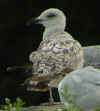 Herring
Gull 90A34157 2cy (argentatus), July 16 2003, Tampere, Finland (61.31N, 23.43E). P4 fully grown, P8-P10 juvenile.
Herring
Gull 90A34157 2cy (argentatus), July 16 2003, Tampere, Finland (61.31N, 23.43E). P4 fully grown, P8-P10 juvenile. Herring
Gull 90A55xxx 2cy (argentatus), July 15 2003, Tampere, Finland (61.31N, 23.43E). P5 fully grown, P8-P10 juvenile.
Herring
Gull 90A55xxx 2cy (argentatus), July 15 2003, Tampere, Finland (61.31N, 23.43E). P5 fully grown, P8-P10 juvenile. Herring Gull argentatus C5N03 2CY, April - September 2007, Tampere dump, Finland. Picture: Visa Rauste.
Herring Gull argentatus C5N03 2CY, April - September 2007, Tampere dump, Finland. Picture: Visa Rauste. Herring
Gull C237R 2cy (argentatus), July 10 2003, Tampere, Finland (61.31N, 23.43E). P5 fully grown, P8-P10 juvenile.
Herring
Gull C237R 2cy (argentatus), July 10 2003, Tampere, Finland (61.31N, 23.43E). P5 fully grown, P8-P10 juvenile. Herring
Gull C9C37 2cy (argentatus), July 15 2003, Tampere, Finland (61.31N, 23.43E). P6 fully grown, P9-P10 juvenile.
Herring
Gull C9C37 2cy (argentatus), July 15 2003, Tampere, Finland (61.31N, 23.43E). P6 fully grown, P9-P10 juvenile. Herring
Gull C9J47 2cy (argentatus), July 09-15 2003, Tampere, Finland (61.31N, 23.43E). P5 fully grown, P8-P10 juvenile.
Herring
Gull C9J47 2cy (argentatus), July 09-15 2003, Tampere, Finland (61.31N, 23.43E). P5 fully grown, P8-P10 juvenile. Herring
Gull C9J63 2cy (argentatus), July 13-14 2003, Tampere, Finland (61.31N, 23.43E). P6 fully grown, P9-P10 juvenile.
Herring
Gull C9J63 2cy (argentatus), July 13-14 2003, Tampere, Finland (61.31N, 23.43E). P6 fully grown, P9-P10 juvenile. Herring
Gull C9V40 2cy (argentatus), July 14 2003, Tampere, Finland (61.31N, 23.43E). P5 fully grown, P8-P10 juvenile.
Herring
Gull C9V40 2cy (argentatus), July 14 2003, Tampere, Finland (61.31N, 23.43E). P5 fully grown, P8-P10 juvenile. Herring
Gull HT-222877 2cy (argentatus), July 14 2003, Tampere, Finland (61.31N, 23.43E). P7 fully grown, P10 juvenile.
Herring
Gull HT-222877 2cy (argentatus), July 14 2003, Tampere, Finland (61.31N, 23.43E). P7 fully grown, P10 juvenile. Herring
Gull HT-230904 2cy (argentatus), July 15 2003, Tampere, Finland (61.31N, 23.43E). P5 fully grown, P8-P10 juvenile.
Herring
Gull HT-230904 2cy (argentatus), July 15 2003, Tampere, Finland (61.31N, 23.43E). P5 fully grown, P8-P10 juvenile. Herring
Gull HT-232584 2cy (argentatus), July 15 2003, Tampere, Finland (61.31N, 23.43E). P6 fully grown, P9-P10 juvenile.
Herring
Gull HT-232584 2cy (argentatus), July 15 2003, Tampere, Finland (61.31N, 23.43E). P6 fully grown, P9-P10 juvenile. Herring
Gull HT-2377xx 2cy (argentatus), July 15 2003, Tampere, Finland (61.31N, 23.43E). P6 fully grown, P9-P10 juvenile.
Herring
Gull HT-2377xx 2cy (argentatus), July 15 2003, Tampere, Finland (61.31N, 23.43E). P6 fully grown, P9-P10 juvenile. Herring
Gull KY61 2cy (argentatus), July 31 2009, Scheveningen, the Netherlands. Also as 3cy.
Herring
Gull KY61 2cy (argentatus), July 31 2009, Scheveningen, the Netherlands. Also as 3cy. Herring
Gull 2cy (argentatus), July 14 2003, Tampere, Finland (61.31N, 23.43E).
Herring
Gull 2cy (argentatus), July 14 2003, Tampere, Finland (61.31N, 23.43E).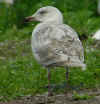 Herring
Gull 2cy (argentatus), July 10-14 2003, Tampere, Finland (61.31N, 23.43E).
Herring
Gull 2cy (argentatus), July 10-14 2003, Tampere, Finland (61.31N, 23.43E). Herring
Gull 2cy (argentatus), July 14 2003, Tampere, Finland (61.31N, 23.43E).
Herring
Gull 2cy (argentatus), July 14 2003, Tampere, Finland (61.31N, 23.43E). Herring
Gull 2cy (argentatus), July 14 2003, Tampere, Finland (61.31N, 23.43E).
Herring
Gull 2cy (argentatus), July 14 2003, Tampere, Finland (61.31N, 23.43E). Herring
Gull 2cy (argentatus), July 14 2003, Tampere, Finland (61.31N, 23.43E). "Long-billed John".
Herring
Gull 2cy (argentatus), July 14 2003, Tampere, Finland (61.31N, 23.43E). "Long-billed John". Herring
Gull 2cy (argentatus), July 14 2003, Tampere, Finland (61.31N, 23.43E).
Herring
Gull 2cy (argentatus), July 14 2003, Tampere, Finland (61.31N, 23.43E). Herring
Gull 2cy (argentatus), July 14 2003, Tampere, Finland (61.31N, 23.43E).
Herring
Gull 2cy (argentatus), July 14 2003, Tampere, Finland (61.31N, 23.43E). Herring
Gull 2cy (argentatus), July 14 2003, Tampere, Finland (61.31N, 23.43E).
Herring
Gull 2cy (argentatus), July 14 2003, Tampere, Finland (61.31N, 23.43E). Herring
Gull 2cy (argentatus), July 14 2003, Tampere, Finland (61.31N, 23.43E).
Herring
Gull 2cy (argentatus), July 14 2003, Tampere, Finland (61.31N, 23.43E). Herring Gull 2CY, July 31 2015, Noordwijk, the Netherlands.
Herring Gull 2CY, July 31 2015, Noordwijk, the Netherlands.  Herring Gull 2CY, July 31 2015, Noordwijk, the Netherlands.
Herring Gull 2CY, July 31 2015, Noordwijk, the Netherlands.  Herring Gull 2CY, July 31 2015, Noordwijk, the Netherlands.
Herring Gull 2CY, July 31 2015, Noordwijk, the Netherlands. 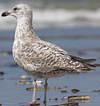 Herring Gull 2CY, July 31 2015, Noordwijk, the Netherlands.
Herring Gull 2CY, July 31 2015, Noordwijk, the Netherlands.  Herring Gull 2CY, July 31 2015, Noordwijk, the Netherlands.
Herring Gull 2CY, July 31 2015, Noordwijk, the Netherlands.  Herring Gull 2CY, July 31 2015, Noordwijk, the Netherlands.
Herring Gull 2CY, July 31 2015, Noordwijk, the Netherlands.  Herring Gull 2CY, July 31 2015, Noordwijk, the Netherlands.
Herring Gull 2CY, July 31 2015, Noordwijk, the Netherlands.  Herring Gull 2CY, July 31 2015, Noordwijk, the Netherlands.
Herring Gull 2CY, July 31 2015, Noordwijk, the Netherlands.  Herring Gull 2CY, July 31 2015, Noordwijk, the Netherlands.
Herring Gull 2CY, July 31 2015, Noordwijk, the Netherlands.  Herring Gull 2CY, July 31 2015, Noordwijk, the Netherlands.
Herring Gull 2CY, July 31 2015, Noordwijk, the Netherlands.  Herring Gull 2CY, July 31 2015, Noordwijk, the Netherlands.
Herring Gull 2CY, July 31 2015, Noordwijk, the Netherlands.  Herring Gull 2CY, July 31 2015, Noordwijk, the Netherlands.
Herring Gull 2CY, July 31 2015, Noordwijk, the Netherlands.  Herring Gull 2CY, July 31 2015, Noordwijk, the Netherlands.
Herring Gull 2CY, July 31 2015, Noordwijk, the Netherlands.  Herring Gull 2CY, July 31 2015, Noordwijk, the Netherlands.
Herring Gull 2CY, July 31 2015, Noordwijk, the Netherlands.  Herring
Gull 2cy, July 09 2013, Katwijk, the Netherlands. P4/P7.
Herring
Gull 2cy, July 09 2013, Katwijk, the Netherlands. P4/P7. Herring
Gull 2cy, July 09 2013, Katwijk, the Netherlands. P4/P7.
Herring
Gull 2cy, July 09 2013, Katwijk, the Netherlands. P4/P7. Herring
Gull 2cy, July 09 2013, Katwijk, the Netherlands. P4/P7.
Herring
Gull 2cy, July 09 2013, Katwijk, the Netherlands. P4/P7. Herring
Gull 2cy, July 09 2013, Katwijk, the Netherlands. P4/P7.
Herring
Gull 2cy, July 09 2013, Katwijk, the Netherlands. P4/P7. Herring
Gull 2cy, July 09 2013, Katwijk, the Netherlands. P4/P7.
Herring
Gull 2cy, July 09 2013, Katwijk, the Netherlands. P4/P7. Herring
Gull 2cy, July 09 2013, Katwijk, the Netherlands. P4/P7.
Herring
Gull 2cy, July 09 2013, Katwijk, the Netherlands. P4/P7. Herring
Gull 2cy, July 09 2013, Katwijk, the Netherlands. P4/P8.
Herring
Gull 2cy, July 09 2013, Katwijk, the Netherlands. P4/P8. Herring
Gull 2cy, July 09 2013, Katwijk, the Netherlands. P5/P8.
Herring
Gull 2cy, July 09 2013, Katwijk, the Netherlands. P5/P8.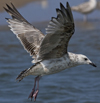 Herring
Gull 2cy, July 09 2013, Katwijk, the Netherlands. P5/P8.
Herring
Gull 2cy, July 09 2013, Katwijk, the Netherlands. P5/P8.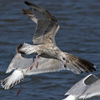 Herring
Gull 2cy, July 09 2013, Katwijk, the Netherlands. P5/P8.
Herring
Gull 2cy, July 09 2013, Katwijk, the Netherlands. P5/P8. Herring
Gull 2cy, July 09 2013, Katwijk, the Netherlands. P5/P8.
Herring
Gull 2cy, July 09 2013, Katwijk, the Netherlands. P5/P8. Herring
Gull 2cy, July 09 2013, Katwijk, the Netherlands. P5/P8.
Herring
Gull 2cy, July 09 2013, Katwijk, the Netherlands. P5/P8. Herring
Gull 2cy, July 09 2013, Katwijk, the Netherlands. P5/P8.
Herring
Gull 2cy, July 09 2013, Katwijk, the Netherlands. P5/P8. Herring
Gull 2cy, July 09 2013, Katwijk, the Netherlands. P5/P8.
Herring
Gull 2cy, July 09 2013, Katwijk, the Netherlands. P5/P8. Herring
Gull 2cy, July 09 2013, Katwijk, the Netherlands. P5/P8.
Herring
Gull 2cy, July 09 2013, Katwijk, the Netherlands. P5/P8. Herring
Gull 2cy, July 09 2013, Katwijk, the Netherlands. P5/P8.
Herring
Gull 2cy, July 09 2013, Katwijk, the Netherlands. P5/P8. Herring
Gull 2cy, July 09 2013, Katwijk, the Netherlands. P5/P8.
Herring
Gull 2cy, July 09 2013, Katwijk, the Netherlands. P5/P8. Herring
Gull 2cy, July 18 2013, Katwijk, the Netherlands. P5/P8.
Herring
Gull 2cy, July 18 2013, Katwijk, the Netherlands. P5/P8.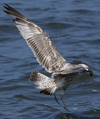 Herring
Gull 2cy, July 18 2013, Katwijk, the Netherlands. P5/P8.
Herring
Gull 2cy, July 18 2013, Katwijk, the Netherlands. P5/P8.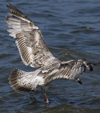 Herring
Gull 2cy, July 18 2013, Katwijk, the Netherlands. P5/P8.
Herring
Gull 2cy, July 18 2013, Katwijk, the Netherlands. P5/P8. Herring
Gull 2cy, July 18 2013, Katwijk, the Netherlands. P5/P8.
Herring
Gull 2cy, July 18 2013, Katwijk, the Netherlands. P5/P8. Herring
Gull 2cy, July 18 2013, Katwijk, the Netherlands. P6/P9.
Herring
Gull 2cy, July 18 2013, Katwijk, the Netherlands. P6/P9. Herring
Gull 2cy, July 18 2013, Katwijk, the Netherlands. P6/P9.
Herring
Gull 2cy, July 18 2013, Katwijk, the Netherlands. P6/P9.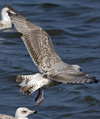 Herring
Gull 2cy, July 18 2013, Katwijk, the Netherlands. P6/P9.
Herring
Gull 2cy, July 18 2013, Katwijk, the Netherlands. P6/P9. Herring
Gull 2cy, July 18 2013, Katwijk, the Netherlands. P6/P9.
Herring
Gull 2cy, July 18 2013, Katwijk, the Netherlands. P6/P9. Herring
Gull 2cy, July 18 2013, Katwijk, the Netherlands. P6/P9.
Herring
Gull 2cy, July 18 2013, Katwijk, the Netherlands. P6/P9. Herring
Gull 2cy, July 18 2013, Katwijk, the Netherlands. P6/P9.
Herring
Gull 2cy, July 18 2013, Katwijk, the Netherlands. P6/P9. Herring
Gull 2cy, July 18 2013, Katwijk, the Netherlands. P7/P10.
Herring
Gull 2cy, July 18 2013, Katwijk, the Netherlands. P7/P10. Herring
Gull 2cy, July 18 2013, Katwijk, the Netherlands. P6/P9.
Herring
Gull 2cy, July 18 2013, Katwijk, the Netherlands. P6/P9. Herring
Gull 2cy, July 30 2014, IJmuiden, the Netherlands. P6/P9.
Herring
Gull 2cy, July 30 2014, IJmuiden, the Netherlands. P6/P9. Herring Gull 2CY, July 31 2015, Noordwijk, the Netherlands.
Herring Gull 2CY, July 31 2015, Noordwijk, the Netherlands.  Herring Gull 2CY, July 31 2015, Noordwijk, the Netherlands.
Herring Gull 2CY, July 31 2015, Noordwijk, the Netherlands. 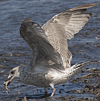 Herring Gull 2CY, July 31 2015, Noordwijk, the Netherlands.
Herring Gull 2CY, July 31 2015, Noordwijk, the Netherlands.  Herring Gull 2CY, July 31 2015, Noordwijk, the Netherlands.
Herring Gull 2CY, July 31 2015, Noordwijk, the Netherlands.  Herring Gull 2CY, July 31 2015, Noordwijk, the Netherlands.
Herring Gull 2CY, July 31 2015, Noordwijk, the Netherlands. 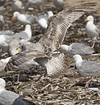 Herring Gull 2CY, July 31 2015, Noordwijk, the Netherlands.
Herring Gull 2CY, July 31 2015, Noordwijk, the Netherlands.  Herring Gull 2CY, July 31 2015, Noordwijk, the Netherlands.
Herring Gull 2CY, July 31 2015, Noordwijk, the Netherlands.  Herring Gull 2CY, July 31 2015, Noordwijk, the Netherlands.
Herring Gull 2CY, July 31 2015, Noordwijk, the Netherlands.  Herring Gull 2CY, July 31 2015, Noordwijk, the Netherlands.
Herring Gull 2CY, July 31 2015, Noordwijk, the Netherlands.  Herring Gull 2CY, July 31 2015, Noordwijk, the Netherlands.
Herring Gull 2CY, July 31 2015, Noordwijk, the Netherlands.  Herring Gull 2CY, July 31 2015, Noordwijk, the Netherlands.
Herring Gull 2CY, July 31 2015, Noordwijk, the Netherlands.  Herring Gull 2CY, July 31 2015, Noordwijk, the Netherlands.
Herring Gull 2CY, July 31 2015, Noordwijk, the Netherlands.  Herring Gull 2CY, July 31 2015, Noordwijk, the Netherlands.
Herring Gull 2CY, July 31 2015, Noordwijk, the Netherlands.  Herring Gull 2CY, July 31 2015, Noordwijk, the Netherlands.
Herring Gull 2CY, July 31 2015, Noordwijk, the Netherlands.  Herring Gull 2CY, July 31 2015, Noordwijk, the Netherlands.
Herring Gull 2CY, July 31 2015, Noordwijk, the Netherlands. 









